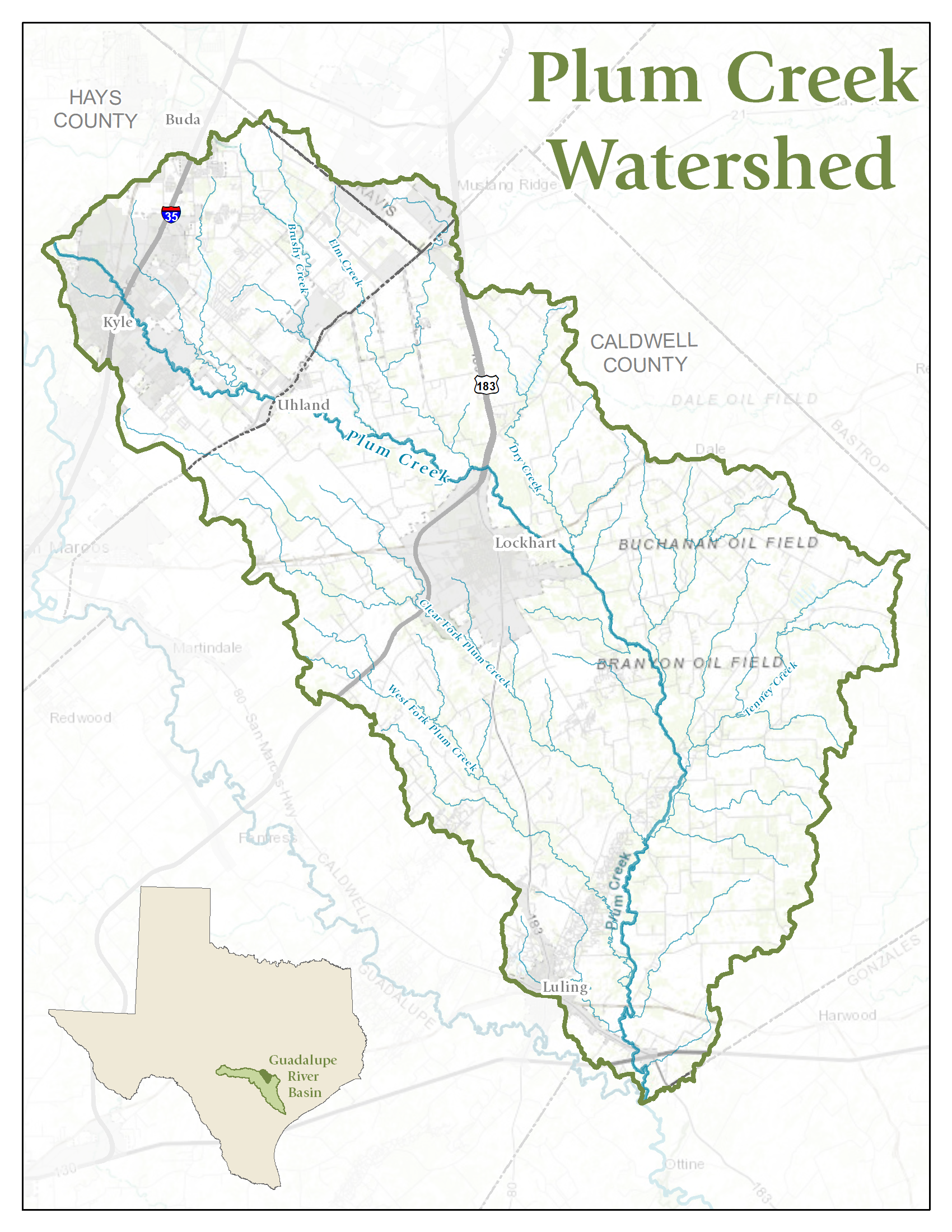Restoring and Protecting a Creek Isn't Easy
Keeping a creek safe, clean, and healthy takes work—especially in an area with high growth, rapid development and increased pressures from humans and invasive species.
Plum Creek has historically played a critical role in the growth and development of the area, from its appeal as a reliable water source for settlers and livestock to recreation opportunities. However, beginning in 2004, the stream was listed by the State of Texas as having E. coli bacteria levels that impaired contact recreation use of the stream, as well as having elevated nutrient concentrations.
Texas made Plum Creek a pilot project in 2005 for local coordination. The people and organizations who affect the creek and count on it make up the Plum Creek Watershed Partnership.
This Partnership developed its initial Watershed Protection Plan (WPP) in 2008 to restore and protect Plum Creek and its tributaries in Caldwell and Hays Counties in South Central Texas. This was the first WPP accepted by the U.S. Environmental Protection Agency (EPA) in the State of Texas.
The Plum Creek WPP is a living document, updated in 2012, 2014, 2018, and 2020 includes key recommendations for programs, projects, public outreach and best practices. Through focused local efforts, the Plan forms the backbone of efforts in the watershed and provides guidance as the Partnership moves forward to implement a variety of strategies to restore and protect water quality.
Browse the website to find out more and get involved!

Plum Creek is a 52-mile stream that begins in Hays County north of Kyle and flows southeast through Caldwell County, passing Lockhart and Luling before meeting the San Marcos River near the Caldwell-Gonzales County line (southern-most tip of watershed).


